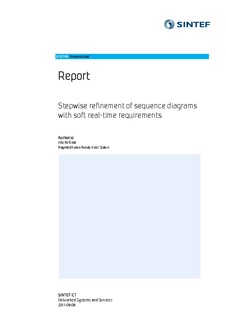| dc.description.abstract | UML sequence diagrams and similar notations are much used to specify computer systems, serving for example as specifications for programmers, or as a means for validating requirements. When specifying and analyzing computer systems, probabilities are often essential, in particular for capturing soft real-time requirements. It is also important to be able to specify systems at different levels of abstraction, depending on how far the development has progressed and the purpose of the specification. Refinement is a means to relate abstract specifications to more concrete specifications in such a way that requirements and analysis results are preserved through the transition from the abstract to the more concrete level.
This paper presents an approach to extend UML 2.x sequence diagrams to capture probabilistic choice in general and soft real-time requirements in particular. The approach is supported by formal semantics and pragmatic refinement relations. The refinement relations have mathematical properties that allow specifications to be developed in a stepwise and modular manner. An example focusing on communication is provided to demonstrate the use and usefulness of the language and the refinement relations | |
